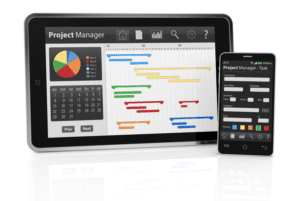Understanding these nuances is crucial for optimal supply chain management, as it directly affects pricing strategies, production planning, and overall operational efficiency. In the world of finance, understanding inventoriable costs is essential for businesses to effectively manage their financial statements and inventory. These costs are expensed in the period that they are incurred and are not added to the cost of inventory. Examples of selling costs include advertising expenses, sales commissions, and shipping costs to customers. These include salaries of office staff, marketing expenses, rent for corporate offices, and utility bills for non-production facilities.
Relationship to Production
By averaging costs, this method provides a balanced approach that mitigates the impact of price volatility. Each of these methods has its own set of accounting and tax implications, making it crucial for businesses to choose the one that aligns best with their financial strategy and reporting requirements. The method a company uses to value its inventory can significantly impact its financial statements and tax liabilities. There are several inventory valuation methods, each with its own set of advantages and implications.
Can inventoriable costs be expensed?
- It encompasses various processes and strategies aimed at effectively controlling, tracking, and optimizing inventory levels.
- However, it may also lead to lower reported profits and outdated inventory values on the balance sheet.
- Meanwhile, on the income statement, these costs are expensed as cost of goods sold when products are sold, reflecting the direct impact on the company’s gross profit and net income.
- The concept of inventoriable costs is fundamental for determining the value of inventory and calculating the cost of goods sold.
- Effective management of direct materials is essential for controlling costs, optimizing production processes, and maintaining competitive pricing.
- By analyzing historical data and trends, these technologies can accurately predict future demand, allowing businesses to optimize their inventory levels and minimize excess stock.
Essentially, they encompass all the costs incurred in turning raw materials into finished goods ready for sale. Inventoriable costs are a critical component of a company’s financial landscape, influencing its profitability, cash flow, and overall financial health. It is important for businesses to understand the difference between inventoriable costs and period costs because they affect the way that the business’s financial statements are prepared. Inventoriable costs are only expensed when the product is sold, while period costs are expensed in the period in which they are incurred. By properly categorizing costs as either inventoriable or period costs, businesses can ensure that their financial statements accurately reflect the true cost of producing and selling their products. For businesses, managing costs effectively is crucial to maintaining profitability and ensuring accurate financial reporting.
One significant aspect of this management involves understanding inventoriable costs—expenses directly tied to the production or acquisition of goods for sale. Accurate inventory costing is essential for financial reporting purposes, as it impacts the valuation of inventory on the balance sheet and the calculation of gross profit on the income statement. By properly valuing inventory, businesses can make informed decisions regarding pricing strategies, inventory management, and overall profitability. Direct materials are a fundamental component of manufacturing processes across various industries.
How do inventoriable costs affect a company’s financial health?
The concept of inventoriable costs is rooted in the principles of accrual accounting, where expenses are recognized when they are incurred, regardless of when payment is made. This means that inventoriable costs are recorded in the accounting period in which the inventory is produced or purchased, even if the payment for these costs is made in a subsequent period. The cost of wood, screws, nails, and other materials used in the production of furniture would be included in the raw materials inventoriable costs. It encompasses various processes and strategies aimed at effectively controlling, tracking, and optimizing inventory levels. Direct labor costs are a fundamental aspect of production, representing the wages and benefits paid to employees directly involved in manufacturing processes. Understanding the specific direct materials required for each product is essential for accurate inventory management and cost control.
Firstly, it is different for different businesses, given the nature of activities being carried out and the type of product being manufactured. Join us as we dive into the world of inventoriable costs and their importance in the financial landscape. ABC International wants to buy refrigerators in China, ship them to Peru, and sell them in its store in Lima. The purchase cost of the refrigerators, as well as the cost to ship them from China to Peru, to pay import fees in Peru, and to ship them to the store for sale are all inventoriable costs. These costs play a pivotal role in determining the value of inventory on hand, which subsequently affects both the balance sheet and income statement.
These employees are responsible for physically assembling or manufacturing the goods and directly contribute to the creation of the final product. Inventoriable costs influence the cash flow statement by reflecting changes in inventory levels, providing insights into operational efficiencies, and guiding strategic cost management decisions. Inventoriable costs affect the income statement by contributing to the calculation of cost of goods sold, revenue recognition processes, and the determination of gross profit margins. The timing of recognition for inventoriable costs is tied to the point of revenue recognition, where these costs transform into cost of sales upon the sale of inventory.
Challenges and Considerations in Managing Inventoriable Costs
The traditional supply chain model is evolving, with businesses increasingly collaborating with suppliers and partners to optimize inventoriable costs. Collaborative supply chain networks enable businesses to share resources, knowledge, and best practices, leading to improved efficiency and cost savings. This collaborative approach can enhance inventory management, reduce lead times, and minimize the risk of disruptions, ultimately benefiting all stakeholders involved. Allocating inventoriable costs accurately can be complex, especially for businesses with diverse product lines or complex manufacturing processes.
- This includes wages paid to workers directly involved in the production process, such as assembly line workers, machinists, and quality control inspectors.
- For instance, the salary of a company’s CEO or the cost of an advertising campaign would be classified as period costs.
- The reason why product costs are considered inventoriable is that they are used to value the inventory.
- Businesses must accurately track and allocate direct labor costs to specific products or production batches to determine the true cost of goods sold.
- Period costs, on the other hand, are expensed in the period they are incurred, regardless of when the related revenue is recognized.
How do Inventoriable Costs Differ from Period Costs?
Properly valuing inventory ensures accurate financial reporting and provides insights into a company’s profitability and financial health. Managing manufacturing overhead costs is essential for maintaining cost efficiency and profitability in manufacturing operations. By optimizing resource utilization, minimizing waste, and implementing cost-saving measures, businesses can reduce manufacturing overhead expenses and improve overall operational efficiency. The allocation of manufacturing overhead costs to units of production is typically done using predetermined overhead rates based on factors such as machine hours, direct labor hours, or production volume. In addition to wages, direct labor costs may also include employee benefits, such as health insurance, retirement contributions, and paid time off. These indirect labor expenses should be considered when calculating the total cost of direct labor.
Under LIFO, the cost of goods sold (COGS) is calculated using the cost of the newest inventory in stock, while the ending inventory is valued at the cost of the oldest inventory. FIFO is a method of inventory valuation that assumes the first units of inventory purchased or produced are the first to be sold. Under FIFO, the cost of goods sold (COGS) is calculated using the cost of the oldest inventory in stock, while the ending inventory is valued at the cost of the most recently purchased or produced inventory. Direct labor refers to the wages and benefits paid to employees who are directly involved in the production process.
These costs are determined to be added to the price the manufactured products will finally be sold at. The rise of omnichannel retail, where consumers expect a seamless shopping experience across various channels, is impacting inventory management. Businesses must adopt advanced inventory management systems that can track inventory across multiple sales channels, ensuring accurate visibility and optimal allocation. This approach helps prevent stockouts, minimizes overstocking, and improves overall customer satisfaction. For example, in a food manufacturing company, the cost of packaging materials, labeling, and quality control testing would be included in the inventoriable costs.

Create a free account to unlock this Template

Effective inventory management techniques play a pivotal role in managing inventoriable costs, encompassing inventory control measures, supply chain optimization, and strategic management of stock levels. These costs are considered part of the inventory valuation until the final products are sold. Factory overhead also encompasses expenses like machinery maintenance, factory supplies, and quality control activities. Explore the essential components and financial implications of inventoriable costs, and inventoriable costs is another term for costs. understand their impact on financial statements and inventory valuation.
It is different from the non-inventoriable cost, which only includes the cost of running businesses, but anything directly related to the production or manufacturing process. When it comes to accounting for these costs, it acquires a position in the expense account when it is sold to customers or leaves the warehouse and disposed of. This is because these costs are added to the cost of product, which are then borne by the customers who buy them.










